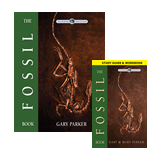What’s a Dryolestoid?
If you were asked to draw a picture of a dryolestoid, would you know where to start?
If you were asked to draw a picture of a dryolestoid, would you know where to start? Since these mammals have been extinct for a long time, we can’t know for certain what they looked like. However, paleontologists have recently discovered two fossilized partial skulls and jaws of dryolestoids in Argentina. These fossils have provided them with exciting, new details about the skull features of these mammals.
Paleontologists discovered that this type of dryolestoid, which they named Cronopio, had both molars and long, saber-like canine teeth. Its molars are similar to those found in insect-eating mammals. Cronopio also had large eyes and a long snout. Some researchers have compared Cronopio to the character named Scrat in the movie “Ice Age,” although we cannot know with certainty exactly how Cronopio looked.1
Cronopio just happens to have some features in common with living insect-eaters, some features in common with other fossilized extinct creatures, and enough unique features to give its discoverers the prerogative of naming it as a new species. It is not a transitional form. The Bible tells us God created all the kinds of animals to reproduce after their kinds. These fossils have added to our knowledge of the dryolestoids as an extinct kind and revealed their diversity—diversity that happens to include some species with long canines. We would expect such diversity by the time of the Flood.1
—Dr. Elizabeth Mitchell
These dryolestoid fossils were found near many dinosaur fossils. All of these animals were probably buried together at some point during the global Flood. For more information about the Flood, fossils, and fossil formation, please read the following:
- Amazing Fossils on Display at the Creation Museum
- Experiment: Fast-Formed Fossils
- Living Fossils
- Look for Fossils in Your Backyard (may require adult assistance)
- Q & A: Flood
- Q & A: Fossils
1 Dr. Elizabeth Mitchell, News to Note, November 12th, 2011, Answers in Genesis, http://www.answersingenesis.org/articles/2011/11/12/news-to-note-11122011.
Recommended Resources
- © 2024 Answers in Genesis
- Privacy Policy
- Contact
- About


